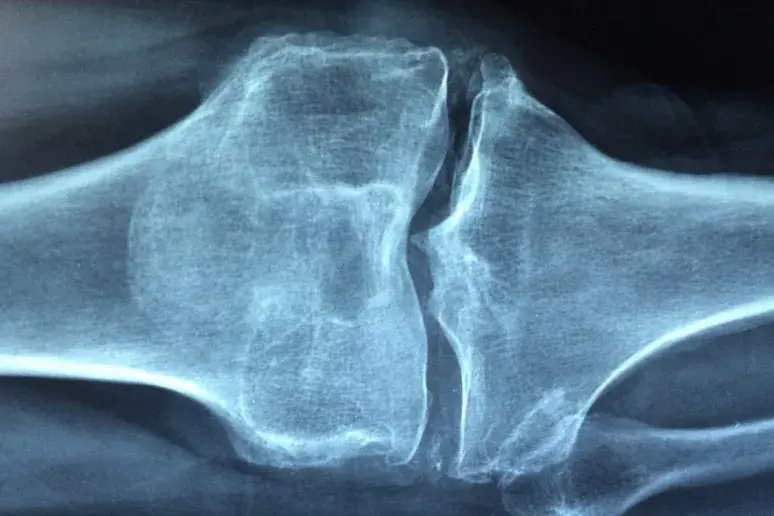
3D-printed implants could offer relief for knee osteoarthritis
A trial being conducted in the UK will examine a potential treatment for knee osteoarthritis using customised 3D-printed metal implants.
Approximately 8.5 million people in the UK experience pain in their joints that can be attributed to osteoarthritis, according to the National Institute for Health and Care Excellence. This form of arthritis is more common in older age groups, with X-ray studies showing that at least 50 per cent of people over the age of 65 show evidence of osteoarthritis.
Pain, loss of mobility and stiffness in the joints are among the most common symptoms of osteoarthritis, meaning it can have a particularly severe impact on elderly people who are also experiencing other health conditions.
The Centre for Therapeutic Innovation (CTI) at the University of Bath is exploring the potential of a new treatment for this disease using tailored osteotomy for knee alignment, or TOKA.
This method starts with a 3D CT scan of the patient's knee, which is then used to create a 3D-printed surgical guide and high-tibial osteotomy (HTO) plate made from medical-grade titanium alloy, which is personalised to the individual.
The plate is fitted during surgery with the aim of realigning the patient's knee to limit stress and pain. It is hoped this approach will simplify HTO procedures and the customised plates will provide a better fit for patients than generic ones.
Professor Richie Gill from the University of Bath's CTI said knee osteoarthritis is a "major health, social and economic issue" that does not receive as much attention as it should. It has a particularly significant impact on women over the age of 45, a quarter of whom are affected by the disease.
He continued: "Knee replacement is only useful for end-stage osteoarthritis, so you can be in pain and have to live with a disability for a long time, potentially decades, before it's possible. We hope that the new TOKA process we've developed will change that."
"3D-printing the custom knee implant and doing the scanning before operating means surgeons will know exactly what they'll see before operating and where the implant will go."
This technique has already been used successfully in Italy and in vivo trials are due to take place in hospitals in Bath, Bristol, Exeter and Cardiff.
While there is no cure for osteoarthritis, there are treatments and methods to help manage the symptoms, which family members of elderly people affected by the disease could find useful.
It may be possible to manage mild symptoms with simple measures such as:
- Regular exercise
- Losing weight
- Wearing suitable footwear
- Using special devices to ease strain on the joints during everyday activities
More severe symptoms can be treated with painkillers and a structured exercise plan delivered by a physiotherapist.
Find your nearest Barchester care home
With over 200 care homes in the UK, there's always a Barchester care home near you.
